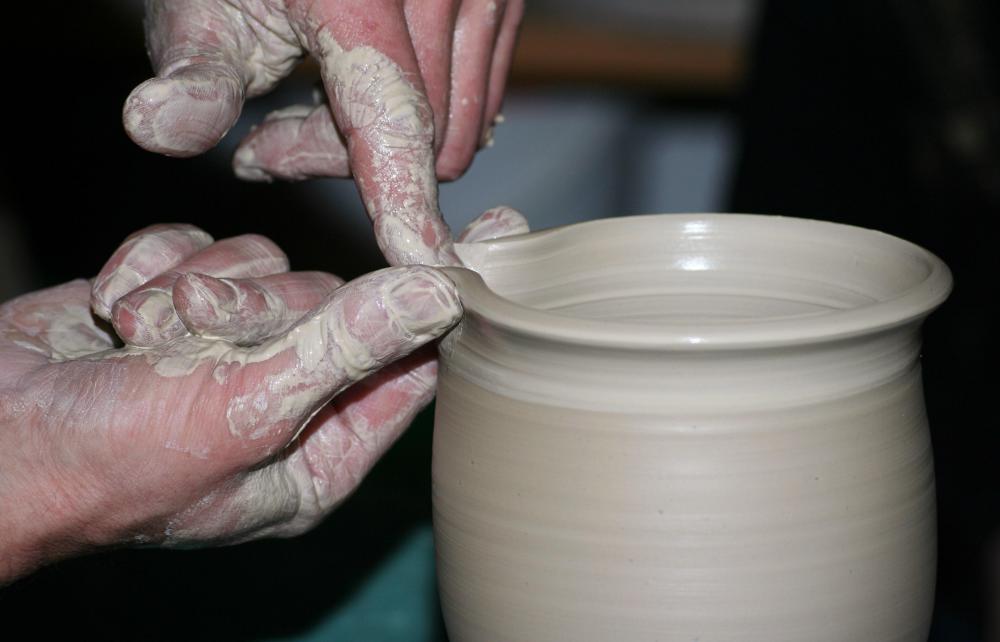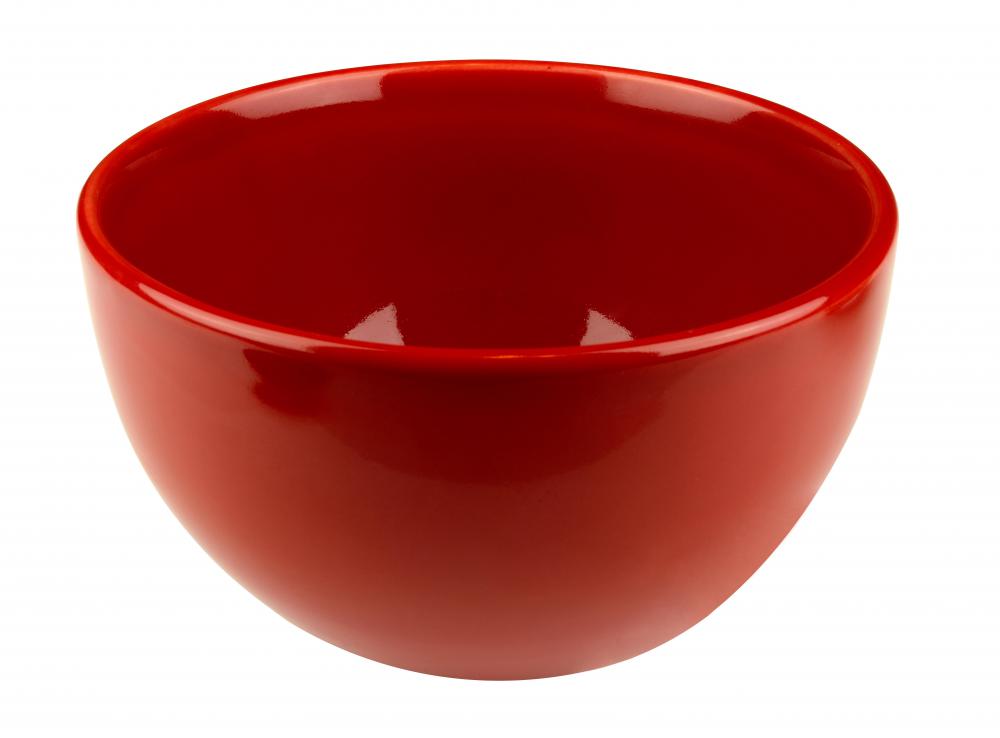At HomeQuestionsAnswered, we're committed to delivering accurate, trustworthy information. Our expert-authored content is rigorously fact-checked and sourced from credible authorities. Discover how we uphold the highest standards in providing you with reliable knowledge.
What is Glazing?
The term glazing can be used as a noun to refer to anything that is transparent. In architecture it can refer to windows, or in cooking to a sugar-based syrup that coats baked goods. The term is most often used in the arts and crafts world, where glazing is a verb describing the process that adds a shiny, protective topcoat to pottery or ceramics.
In ceramics, glazing adds a vitreous, or impervious, surface to the otherwise porous material. Without a coat of glaze, most earthenware products would not be able to hold water, and would absorb it, making them easy to damage. The glaze also adds an element of decorative appeal to the item and can enhance the patterns beneath.

The exact origin and history of glazing is sketchy. Glazed pots from Japan dated to about 8000 BC have been recovered during archaeological digs, while those unearthed in China and Iran date from about 5500 BC. Due to this, Japan is often credited as the birthplace of glazing, although this cannot be confirmed absolutely.
Glaze is typically made of a crystallized, glassy material, such as silica, mixed with iron oxides. The material melts when heated, but maintains enough hardness to keep from sliding off of the pottery. The length of the process varies slightly, depending on which type of glaze is used — as does the curing time. Glaze can be found in both liquid and powder form.

The glazing process is fairly simple in steps, but requires some practice to obtain the correct thickness and smoothness. Glaze is spread evenly over the item using a brush. If it will be used for holding liquids, both the interior and exterior of the piece must be coated. The item is then placed into a kiln and fired at high temperatures for a given period of time. The pottery is then left to cool, cure, and settle before handling.
Patterns and decorations can be placed both under and over the glaze. Some pieces are fired briefly before painting, then glazed. Other patterns are painted onto fresh pieces, called greenware, then fired and glazed. Overglaze is a pattern that is painted on after the initial coat of glaze is applied. It can be painted with enamels or other non-glaze paints, and fired once again. This firing helps the new paint to lay flat against the glaze. Sometimes an additional coat of glaze is placed over top, sandwiching the design between two layers of glaze.
AS FEATURED ON:
AS FEATURED ON:












Discussion Comments
My favorite kind of glazing is the kind that goes on doughnuts! As a matter of fact I have a ceramic doughnut that I keep on my desk at work. It looks so real that I have actually been able to offer it to a few people who thought I was about to give them a fresh doughnut. I like to think that it has been double glazed!
I need to have my windows replaced, and I was looking around for someone to do this. The person who replaces the glass part of the window is called a glazier, and the glass itself is called the glazing.
I did not know this, but windows can actually be double glazed or triple glazed for better insulation. The extra glass keeps more heat or air conditioned air inside your home and keeps the cold or hot on the outside from entering the home.
Glazing can come textured or tinted for privacy and for sun protection. It seems I have a lot of options.
Pottery class was very hard for me. I think I have blocked most of it out of my mind. Now, when I think of glazing, I think of the coating I apply to cinnamon rolls.
I love making homemade cinnamon rolls. The glaze is super simple to make. You can use only powdered sugar and milk blended together until the lumps are gone, or you can add just a touch of butter in the mix.
When you glaze cinnamon rolls while they are still quite warm, the glaze melts and soaks into them, giving them an extra sweetness. This sugary coat is the perfect finish.
I like to use crystalline glazes. The crystals of these glazes are large enough to notice.
Though mostly all glazes have invisible crystals, macro-crystalline glazes really show theirs. As this glaze melts and cools, random strings of glass molecules bind together.
If the glaze is liquid enough for molecules to move a lot, and if it is hot enough for long enough that the molecules can have time, they will arrange themselves into crystals.
I think pottery with a crystalline glaze has a wonderfully natural look to it, as though it sat in a cave abandoned for years while crystals grew on its surface. The texture might be too rough for some tastes, but I prefer it to glassy objects.
I love pottery, and I know that when choosing a glaze, you will have several types from which to select. The effect you desire to create on the surface you are glazing will help you determine which glaze is right for you.
A gloss glaze makes the surface very shiny and smooth, with an almost glassy appearance. A semi-gloss glaze, though still somewhat smooth and shiny, is not as glassy as a gloss glaze.
A satin glaze provides a smooth surface with a sheen instead of a shine. A matte glaze is kind of rough and has no sheen or shine.
Orange-peel glaze has a bumpy texture that develops during salt-firing. The surface texture will resemble the feel of orange skin. A textured glaze can be rough, sandy, and even rocky. This type of glaze is often used on sculptures.
@bivie - It's the other kind of glazing I pursued as a hobby -- the kind that is done for foods, like double glazed donuts. I guess this goes along with being a cook, but that was the first thing that crossed my mind when I read the title of the article. Then I got a revelation when I read about the glaze for pottery. I started to see myself putting sugar on the pottery.
Wow, this brings back some memories. I haven't pursued it as a hobby for a long time, but I remember learning about this in high school. It was in a shop class or something where they taught us about the importance of glazing pottery.
Post your comments